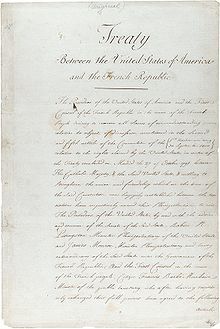Cross posted from The Stars Hollow Gazette
This is your morning Open Thread. Pour your favorite beverage and review the past and comment on the future.
Find the past “On This Day in History” here.
December 21 is the 355th day of the year (356th in leap years) in the Gregorian calendar. There are 10 days remaining until the end of the year. This is a frequent day for the winter solstice to occur in the northern hemisphere and summer solstice to occur in the southern hemisphere.
On this day in 1968, Apollo 8, the first manned mission to the moon, is successfully launched from Cape Canaveral, Florida, with astronauts Frank Borman, James Lovell, Jr., and William Anders aboard.
Apollo 8 was the first human spaceflight to leave Earth orbit; the first to be captured by and escape from the gravitational field of another celestial body; and the first crewed voyage to return to planet Earth from another celestial body-Earth’s Moon. The three-man American crew of mission Commander Frank Borman, Command Module Pilot James Lovell, and Lunar Module Pilot William Anders became the first humans to directly see the far side of the Moon, as well as the first humans to see planet Earth from beyond low Earth orbit. The 1968 mission was accomplished with the first manned launch of a Saturn V rocket. Apollo 8 was the second manned mission of the Apollo program and the first manned launch from the John F. Kennedy Space Center.
Originally planned as a second Lunar Module/Command Module test in an elliptical medium Earth orbit in early 1969, the mission profile was changed in August 1968 to a more ambitious Command Module-only lunar orbital flight to be flown in December, because the Lunar Module was not ready to make its first flight then. This meant Borman’s crew was scheduled to fly two to three months sooner than originally planned, leaving them a shorter time for training and preparation, thus placing more demands than usual on their time and discipline.
After launching on December 21, 1968, Apollo 8 took three days to travel to the Moon. It orbited ten times over the course of 20 hours, during which the crew made a Christmas Eve television broadcast in which they read the first 10 verses from the Book of Genesis. At the time, the broadcast was the most watched TV program ever. Apollo 8’s successful mission paved the way for Apollo 11 to fulfill U.S. President John F. Kennedy’s goal of landing a man on the Moon before the end of the decade.

 In April 1803, the United States purchased from France the 828,000 square miles that had formerly been French Louisiana. The area was divided into two territories: the northern half was Louisiana Territory, the largely unsettled (though home to many Indians) frontier section that was later explored by Lewis and Clark; and the southern Orleans Territory, which was populated by Europeans.
In April 1803, the United States purchased from France the 828,000 square miles that had formerly been French Louisiana. The area was divided into two territories: the northern half was Louisiana Territory, the largely unsettled (though home to many Indians) frontier section that was later explored by Lewis and Clark; and the southern Orleans Territory, which was populated by Europeans.
 When these phrases appeared in the pages of the Pennsylvania Journal for the first time, General George Washington’s troops were encamped at McKonkey’s Ferry on the Delaware River opposite Trenton, New Jersey. In August, they had suffered humiliating defeats and lost New York City to British troops. Between September and December, 11,000 American volunteers gave up the fight and returned to their families. General Washington could foresee the destiny of a rebellion without an army if the rest of his men returned home when their service contracts expired on December 31. He knew that without an upswing in morale and a significant victory, the American Revolution would come to a swift and humiliating end.
When these phrases appeared in the pages of the Pennsylvania Journal for the first time, General George Washington’s troops were encamped at McKonkey’s Ferry on the Delaware River opposite Trenton, New Jersey. In August, they had suffered humiliating defeats and lost New York City to British troops. Between September and December, 11,000 American volunteers gave up the fight and returned to their families. General Washington could foresee the destiny of a rebellion without an army if the rest of his men returned home when their service contracts expired on December 31. He knew that without an upswing in morale and a significant victory, the American Revolution would come to a swift and humiliating end. On this day in 1918, the House of Representatives passed the
On this day in 1918, the House of Representatives passed the 

 On this day in 1995,
On this day in 1995,  On this day in 1642,
On this day in 1642,  New Zealand is one of the most recently settled major landmasses. The first known settlers were Eastern Polynesians who, according to most researchers, arrived by canoe in about AD 1250-1300. Some researchers have suggested an earlier wave of arrivals dating to as early as AD 50-150; these people then either died out or left the islands. Over the following centuries these settlers developed into a distinct culture now known as Maori. The population was divided into iwi (tribes) and hapu (subtribes) which would cooperate, compete and sometimes fight with each other. At some point a group of Maori migrated to the Chatham Islands where they developed their distinct Moriori culture.
New Zealand is one of the most recently settled major landmasses. The first known settlers were Eastern Polynesians who, according to most researchers, arrived by canoe in about AD 1250-1300. Some researchers have suggested an earlier wave of arrivals dating to as early as AD 50-150; these people then either died out or left the islands. Over the following centuries these settlers developed into a distinct culture now known as Maori. The population was divided into iwi (tribes) and hapu (subtribes) which would cooperate, compete and sometimes fight with each other. At some point a group of Maori migrated to the Chatham Islands where they developed their distinct Moriori culture.